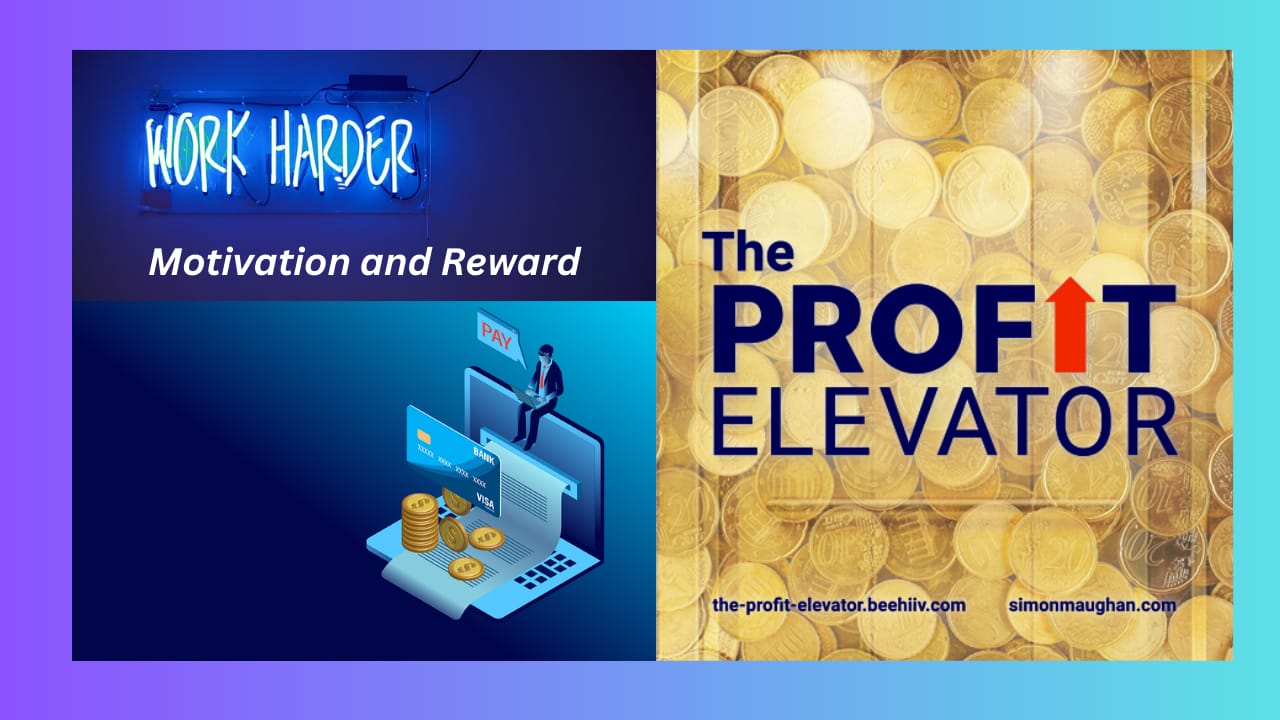
Motivation and Reward
It’s hard to motivate people and run a business. It takes on average 7 years to generate stable profits, including a few strategic pivots. Keeping teams together and productive for that long is a challenge.
Large businesses suffer flagging motivation. Half of the Fortune 500 from 20 years ago no longer exist, either taken over or gone bust. A major reason is creeping bureaucracy stifling innovation.
A constant challenge I hear from CEOs is how to raise employee engagement. The passion of startup staff fades into a pile of management tasks. Despite careful hiring there is an inevitable dilution of zeal.
What can be done?
Misusing Incentives
The mistake most leaders make is to repeat a vision. Without evidence of progress, an inspirational viewpoint gets old. I worked with a founder who kept saying,
“The market is ready for us, are we ready for the market?” The answer was no, but instead of changing management became more zealous. Recent joiners were interrogated and the sales team criticised for a lack of belief. A change in distribution model was all that was required, but it took months for management to listen to feedback from potential clients.
Another mistake is to misuse incentives. There is a right and a wrong time to motivate and reward. This is because of a cognitive bias we’ve met before.
Hyperbolic Discounting
Hyperbolic Discounting is placing the highest importance on immediate satisfaction. Reducing urgent pain is more attractive than a far off goal of greater value. This is one reason why most innovation comprises small changes to existing processes, rather than radical overhaul. Managing people is similar.
Make sure that sales commissions may be earned. The best sales people don’t hang around to establish a sales process. You must convince them in interviews they’ll be flying in six months. They expect to be fired if they’re not.
Ensure that bonuses are payable in a reasonable time frame. A completion bonus on a 3-year project does not work. Instead, break it up into smaller payments for delivering milestones. That way people remain incentivised.
In 2006 I invested in a start up brokerage. It took longer than expected to generate repeatable sales. The CEO’s solution was to halve people’s pay, believing it would increase motivation. Big mistake.
Incentive and Entitlement
People expect to be paid according to contract. They make plans, choose where to live and arrange commutes based on pay. Cut it and the only motivation you increase is to find a better boss. A new job removes pain faster than fixing issues in the existing role.
Avoiding pain provides twice the motivation of gaining pleasure. In Hong Kong I worked for a brokerage that cut pay. There were long term equity rewards for those who stayed. I didn’t.
An annual bonus becomes an entitlement and cutting it is painful. People blame the company not their work. I’ve experienced this in Asian countries with the custom of paying an extra month at holiday time.
Variable Bonuses
If you want to pay variable bonuses then make them a significant share of total pay. Investment bank bonuses are worth several times salary. People understand there is a performance element to large sums.
This works because pay is linked to market activity. Competitors suffer in down years too. People leave in the boom times, enticed by guarantees.
If you have a good year and don’t get paid you are expected to ask for more. If the pushback is that the firm had a bad year, this means others were paid before you. Motivation is lost.
Goal Gradient Effect
It’s a long journey to launch product and establish a business. Keeping a team together and motivated is essential to avoid expensive staff churn. Timing motivation and reward is critical.
Doubts and uncertainties are greatest at the start of a project. As the end comes into view the Goal Gradient Effect increases the motivation to finish. You do not need to scale up rewards.
Most managers motivate to start and promise rewards at the end. If you are not seeing results then make a change. Spread rewards over the life of the project.
This aligns compensation with Hyperbolic Discounting, the Goal Gradient Effect and Pain being 2x Pleasure.
Questions to Ask
What am I doing to motivate my team?
Is variable pay perceived as entitlement?
Do I offer regular rewards as well as motivation?
I’m Simon Maughan and I write The Profit Elevator as a guide for B2B firms seeking faster growth. The P.R.O.F.I.T. Through Process Planner is my programme to design, develop and automate 30 processes that scale small and medium sized businesses.
If you found this letter valuable, please share it with a colleague.

